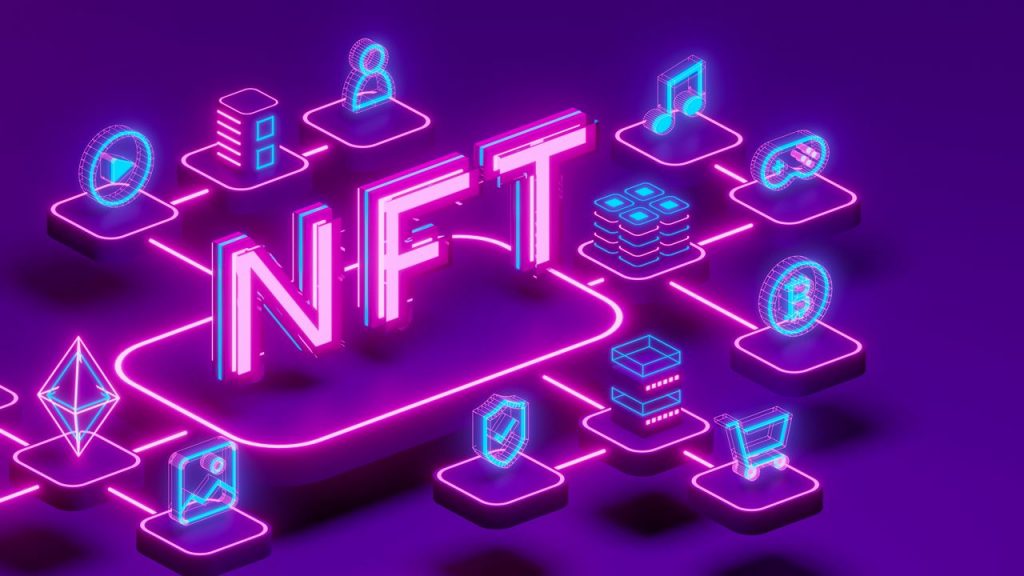
Non-fungible tokens (NFTs) have surged in popularity, redefining the concept of ownership in the digital age. From art and music to gaming and real estate, NFTs are revolutionizing how creators, consumers, and investors interact with digital assets. This article explores the rise of NFTs, their technology, and the transformative impact they are having on various industries.
What Are NFTs?
NFTs, or non-fungible tokens, are unique digital assets that represent ownership of a specific item or piece of content on a blockchain. Unlike cryptocurrencies such as Bitcoin or Ethereum, which are fungible (interchangeable), NFTs are distinct and cannot be exchanged on a one-to-one basis.
Key Characteristics of NFTs
- Uniqueness: Each NFT has a unique identifier, making it distinguishable from others.
- Ownership: Ownership is verifiable and recorded on a blockchain.
- Indivisibility: NFTs cannot be divided into smaller units like cryptocurrencies.
- Programmability: Smart contracts enable royalties and other functionalities.
How Do NFTs Work?
NFTs are created, bought, and sold on blockchain platforms, primarily Ethereum, but other blockchains like Solana, Binance Smart Chain, and Tezos also support NFTs. The process typically involves:
- Minting:
- Digital assets are converted into NFTs on a blockchain.
- Metadata, including ownership details and unique attributes, is added.
- Smart Contracts:
- Smart contracts govern the NFT’s functionality, including resale royalties for creators.
- Marketplace Transactions:
- NFTs are traded on platforms like OpenSea, Rarible, and Foundation.
Applications of NFTs
The versatility of NFTs has led to their adoption across various industries:
1. Digital Art
- Use Case: Artists mint and sell their work as NFTs, ensuring authenticity and earning royalties on resales.
- Examples: Beeple’s “Everydays: The First 5000 Days” sold for $69 million.
2. Gaming
- Use Case: Players own in-game assets like characters, skins, and items.
- Examples: Games like Axie Infinity and Decentraland utilize NFTs for virtual economies.
3. Music and Entertainment
- Use Case: Musicians release songs, albums, or concert tickets as NFTs.
- Examples: Kings of Leon’s album “When You See Yourself” was sold as an NFT.
4. Virtual Real Estate
- Use Case: Digital land and properties in metaverse platforms are bought and sold as NFTs.
- Examples: Platforms like Decentraland and The Sandbox.
5. Collectibles
- Use Case: Digital collectibles like trading cards or sports memorabilia.
- Examples: NBA Top Shot sells highlight clips as NFTs.
Benefits of NFTs
- Empowering Creators:
- Direct access to global markets eliminates the need for intermediaries.
- Smart contracts ensure creators receive royalties on secondary sales.
- Transparency and Authenticity:
- Blockchain technology verifies ownership and provenance, reducing counterfeiting.
- New Revenue Streams:
- Enables monetization of digital assets in innovative ways.
- Community Engagement:
- NFT holders often gain access to exclusive perks, such as memberships or events.
Challenges and Criticisms of NFTs
Despite their potential, NFTs face significant challenges:
- Environmental Concerns:
- Energy-intensive blockchains like Ethereum have raised concerns about carbon footprints. Solutions like Ethereum 2.0 and eco-friendly chains aim to address this.
- Market Volatility:
- NFT values can be highly speculative, leading to price instability.
- Legal and Regulatory Issues:
- Questions about copyright, intellectual property, and taxation remain unresolved.
- Accessibility:
- High gas fees on blockchain platforms can deter smaller creators and buyers.
NFT Market Growth
Key Statistics:
- Total NFT sales volume in 2021 exceeded $25 billion.
- Major NFT marketplaces like OpenSea report millions of active users.
Future Projections:
The NFT market is expected to grow further as adoption increases across industries, and as technological advancements like Layer 2 solutions reduce costs and improve scalability.
NFTs in the Metaverse
The metaverse—a collective virtual shared space—is a significant driver of NFT adoption. Users in metaverse platforms can:
- Purchase virtual real estate as NFTs.
- Trade digital wearables and accessories for avatars.
- Monetize creative content and experiences.
How to Get Started with NFTs
- Choose a Wallet:
- Popular options include MetaMask, Trust Wallet, and Coinbase Wallet.
- Buy Cryptocurrency:
- Purchase Ethereum or other compatible cryptocurrencies.
- Select a Marketplace:
- Platforms like OpenSea, Rarible, or Foundation offer diverse collections.
- Mint Your Own NFT:
- Upload your digital asset and follow the minting process on a chosen platform.
- Explore and Trade:
- Browse collections, bid on items, or list your NFTs for sale.
Comparison: Traditional Assets vs NFTs
| Feature | Traditional Assets | NFTs |
|---|---|---|
| Ownership Proof | Physical documents | Blockchain-verified |
| Accessibility | Limited by geography | Global access via the internet |
| Intermediaries | Banks, brokers | None (peer-to-peer transactions) |
| Duplication Risk | High | Impossible |
Conclusion
NFTs are reshaping the concept of ownership in the digital age, offering creators and users new ways to interact with digital assets. While challenges remain, their impact on industries like art, gaming, and the metaverse is undeniable. As the technology evolves and becomes more accessible, NFTs are likely to play a significant role in the future of digital economies.